Gardening for August
August is a pivotal month in the gardening calendar. As summer reaches its peak, it’s crucial to maintain your garden’s health while preparing for the transitional months ahead. Here’s an in-depth look at the essential tasks to focus on this month to ensure your garden thrives.
Allow the Grass to Flourish
In the heat of August, your lawn may start to show signs of stress. Instead of mowing it down to a short length, let your grass grow a bit longer this month.
The Benefits of Longer Grass
Longer grass blades provide shade for the soil, which can help reduce evaporation rates and keep the soil cooler. This practice not only helps the grass retain moisture but also encourages deeper root growth, making your lawn more resilient against drought conditions.
Practical Lawn Care Tips
- Mow at a Higher Setting: Adjust your mower to a higher cut. Aim for a height of 3-4 inches to promote healthier grass.
- Leave Grass Clippings: When you mow, consider leaving the clippings on the lawn. They act as a natural fertilizer, returning valuable nutrients to the soil as they decompose.
Minimize Excessive Pruning
While late summer may tempt you to start trimming back your plants, it’s essential to be cautious with pruning in August.
Understanding Plant Growth Cycles
Many plants are still actively growing during this month, and heavy pruning can cause undue stress. Instead, focus on light maintenance to keep your garden looking tidy.
Smart Pruning Practices
- Deadheading: Remove spent flowers to encourage further blooming without removing significant foliage.
- Selective Trimming: If plants are overgrown, consider light trimming to maintain their shape, but avoid cutting back more than one-third of the plant.
Embrace Late Summer Colors
August brings a stunning array of colors to the garden. Take advantage of this vibrant palette to enhance your outdoor space.
Planting for Seasonal Interest
Consider incorporating late-blooming perennials and annuals that thrive in the warm weather. Plants like zinnias, asters, and sedums can add lively colors to your landscape.
Creating a Colorful Display
- Mixing Textures and Colors: Combine various heights and bloom shapes to create visual interest. Pairing tall, spiky flowers with low-growing ground covers can add depth.
- Seasonal Arrangements: Use plants that have staggered blooming periods to ensure continuous color from summer into fall.
Transplant to Larger Containers
As plants grow, they may outgrow their pots, leading to root-bound conditions. August is a great time to transplant these containers to larger pots.
The Advantages of Transplanting
Moving plants to larger pots allows them to expand their root systems, which is crucial for their health and vitality. This practice is especially important for container gardens that may be limited in space.
Steps for Successful Transplanting
- Select Appropriate Pots: Choose pots that are at least 2 inches larger in diameter than the current ones.
- Use Quality Soil: Fill the new pots with fresh potting mix that includes organic matter to provide nutrients and improve drainage.
Stay on Top of Weeding
Weeds can flourish in August’s warm conditions, so maintaining a regular weeding schedule is vital.
The Importance of Weed Control
Weeds compete for nutrients, water, and sunlight, which can hinder the growth of your desirable plants. Regularly removing them helps maintain a healthy garden environment.
Effective Weeding Techniques
- Hand Weeding: Pull weeds by hand, especially after a rain when the soil is moist. This makes it easier to remove the roots.
- Mulching: Apply a layer of mulch around plants to suppress weed growth, retain moisture, and regulate soil temperature.
Deep Watering Practices
With summer in full swing, it’s essential to ensure your plants receive adequate hydration. Deep watering is key to promoting healthy growth.
Hydration Strategies
Deep watering encourages roots to grow deeper into the soil, making plants more drought-resistant in the long run.
Tips for Deep Watering
- Water Early or Late: Water your garden in the early morning or late evening to minimize evaporation losses.
- Use Soaker Hoses: Consider using soaker hoses or drip irrigation systems to deliver water directly to the roots, ensuring efficient hydration.
Enjoy the Bounty: Harvest Time
August often signals the peak of harvest season for many fruits and vegetables. Enjoy the fruits of your labor by harvesting crops at their peak ripeness.
Maximizing Your Harvest
Regularly harvesting your crops not only provides fresh produce but can also encourage plants to produce more.
Tips for Harvesting
- Pick Frequently: For crops like tomatoes and peppers, regular harvesting encourages continued fruit production.
- Preserve Excess: If you have an abundant harvest, consider preserving excess produce through canning, freezing, or drying for later use.
Fertilize with Organic Options
As plants continue to grow during this productive time, they may benefit from a nutrient boost. Organic fertilization is a great way to enrich your garden sustainably.
Choosing the Right Fertilizer
Using organic fertilizers helps improve soil health and promotes beneficial microorganisms, leading to long-term benefits for your garden.
Organic Fertilizing Guidelines
- Compost and Manure: Apply compost or well-rotted manure to nourish your plants and enrich the soil.
- Follow Application Rates: Always adhere to recommended application rates to avoid nutrient burn or other issues.
Prepare for Hurricane Season
In many regions, August marks the beginning of hurricane season. Taking proactive steps can help protect your garden from potential storms.
Safety Precautions for Your Garden
Preparing your garden for storms involves securing loose items and providing support for vulnerable plants.
Hurricane Preparedness Tips
- Secure Loose Objects: Bring in or tie down garden furniture, decorations, and tools to prevent them from becoming projectiles in strong winds.
- Stake Tall Plants: Use stakes or supports for tall plants to prevent breakage during high winds.
Focus on Pest Management
As the summer progresses, pests may become more prevalent. Monitoring and managing pest populations is essential for maintaining a healthy garden.
Integrated Pest Management (IPM)
Utilizing IPM techniques allows for a balanced approach to controlling pests without relying heavily on chemicals.
Pest Management Strategies
- Regular Inspections: Check plants frequently for signs of pests or disease. Early detection is crucial for effective control.
- Encourage Beneficial Insects: Attract beneficial insects, such as ladybugs and lacewings, that can help control pest populations naturally.
Plan for Fall Planting
August is also an excellent time to begin planning for your fall garden. Preparing now can lead to a more successful planting season.
Considerations for Fall Planting
As you think ahead, consider which crops and perennials you want to plant in the fall.
Tips for Planning
- Research Planting Times: Different plants have varying planting timelines. Research which varieties thrive when planted in late summer or early fall.
- Soil Preparation: Start preparing your soil now by adding organic matter and ensuring good drainage.
Monitor Soil Moisture Levels
With the heat of August, soil moisture levels can fluctuate significantly. Monitoring these levels is essential for the health of your plants.
Tools for Soil Monitoring
Using tools to assess soil moisture can help you determine when to water effectively.
Soil Moisture Techniques
- Moisture Meters: Consider using a moisture meter to accurately gauge the moisture content of your soil.
- Finger Test: Alternatively, stick your finger into the soil about an inch deep. If it feels dry, it’s time to water.
Maintain Healthy Foliage
Keeping an eye on your plants’ foliage is crucial in August. Healthy leaves indicate that your plants are thriving and capable of photosynthesis.
Foliage Care Tips
Promote healthy foliage through regular care practices.
Leaf Care Strategies
- Remove Damaged Leaves: Trim off any yellowing or damaged leaves to improve air circulation and reduce the risk of disease.
- Monitor for Fungal Diseases: Pay attention to signs of fungal diseases, especially in humid conditions. Treat affected plants promptly with organic fungicides if necessary.
Engage in Companion Planting
Companion planting can enhance plant growth and deter pests. Consider incorporating companion plants into your garden this month.
Benefits of Companion Planting
Certain plants can help each other thrive when grown together. For instance, planting marigolds near vegetables can deter harmful insects.
Planning Companion Arrangements
- Research Compatible Plants: Look into which plants benefit from each other, such as basil and tomatoes or carrots and onions.
- Create Diverse Plantings: Mixing plants can lead to a healthier garden ecosystem and improve yields.
Revitalize Container Gardens
Container gardens may require extra attention during the heat of August. Regular maintenance can ensure they continue to flourish.
Container Care Tips
Ensure your container plants have the right conditions to thrive.
Practical Container Strategies
- Monitor Water Needs: Container plants often dry out faster than those in the ground. Check soil moisture daily and water as needed.
- Refresh Soil: If plants are root-bound or soil looks depleted, consider repotting or refreshing the soil to give them a nutrient boost.
Educate Yourself on Gardening Techniques
August is an excellent time to expand your gardening knowledge. Educating yourself on new techniques can enhance your gardening skills.
Resources for Learning
Take advantage of various resources available for gardeners.
Ways to Enhance Your Knowledge
- Attend Workshops: Look for local gardening workshops or classes to learn new skills and techniques.
- Read Books and Blogs: Explore gardening books and online resources for tips and inspiration to apply in your own garden.
Reflect on Your Gardening Goals
Take time to reflect on your gardening goals as August comes to a close. Assess what worked well and what could be improved.
Evaluating Your Progress
Consider keeping a gardening journal to track your successes and challenges throughout the season.
Goal-Setting Strategies
- Review Your Journal: Look back at your notes to identify which plants thrived and which didn’t.
- Set New Goals: Based on your reflections, set new goals for the upcoming seasons to enhance your gardening journey.
Conclusion
August is a busy month in the garden, filled with tasks that prepare your plants for the upcoming seasons. From maintaining your lawn to harvesting bountiful crops, each task contributes to a healthy and vibrant garden. By focusing on these essential activities, you can ensure that your garden not only survives the summer but thrives well into the fall.
Embrace the beauty of this month, engage with your plants, and enjoy the fruits of your labor. With the right care and attention, your garden will be a source of joy and sustenance for many months to come.


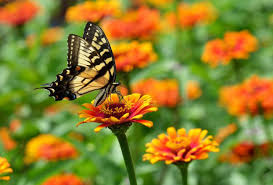

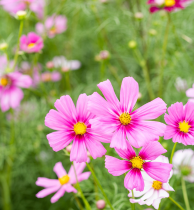
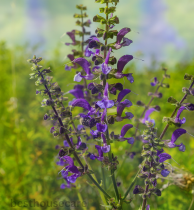
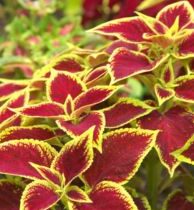
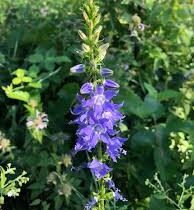
Leave a Reply
View Comments